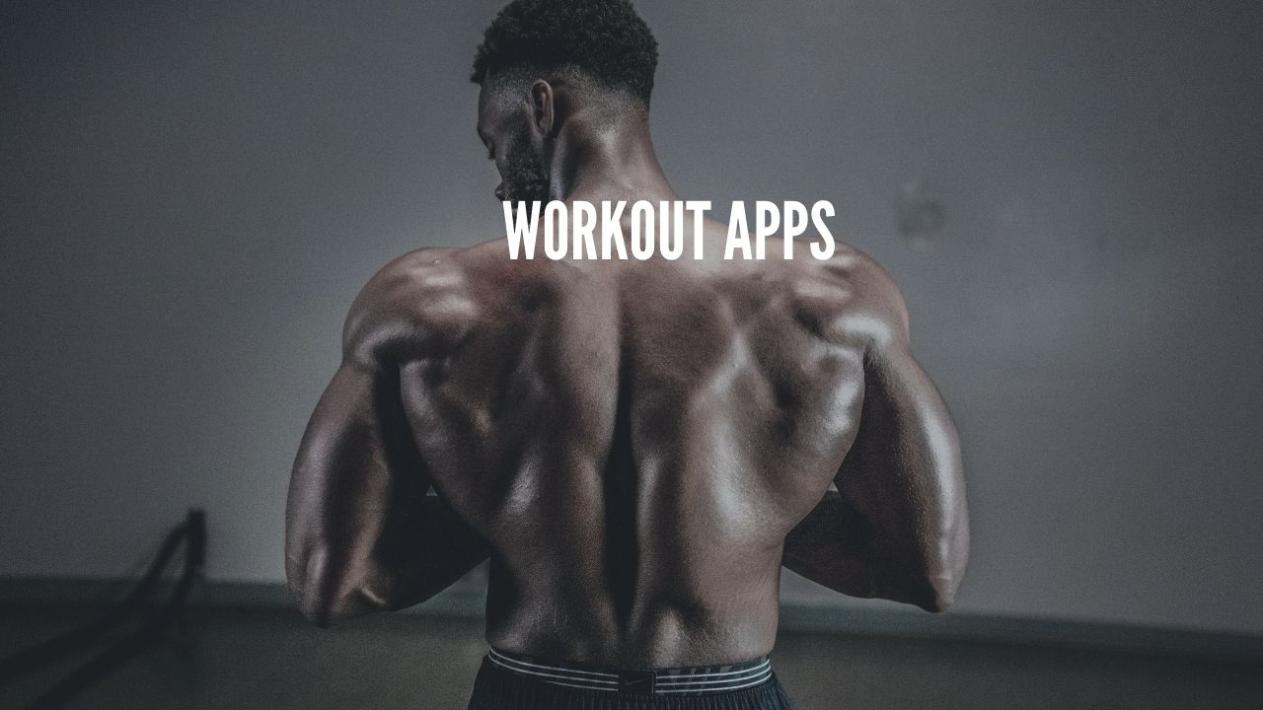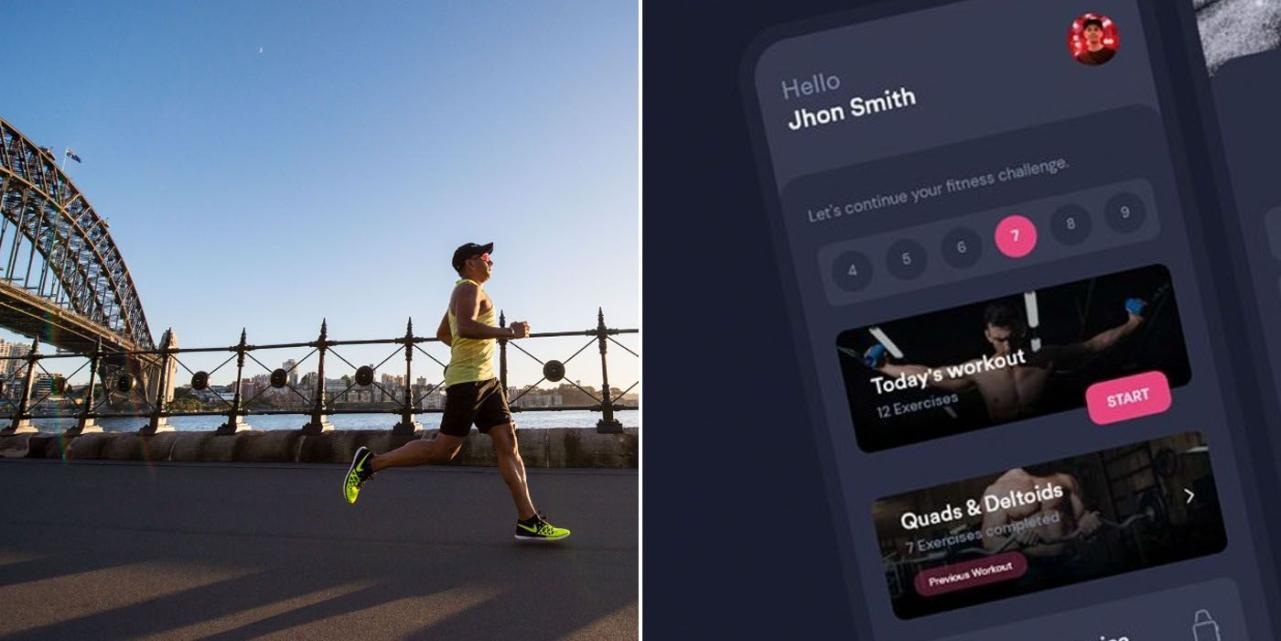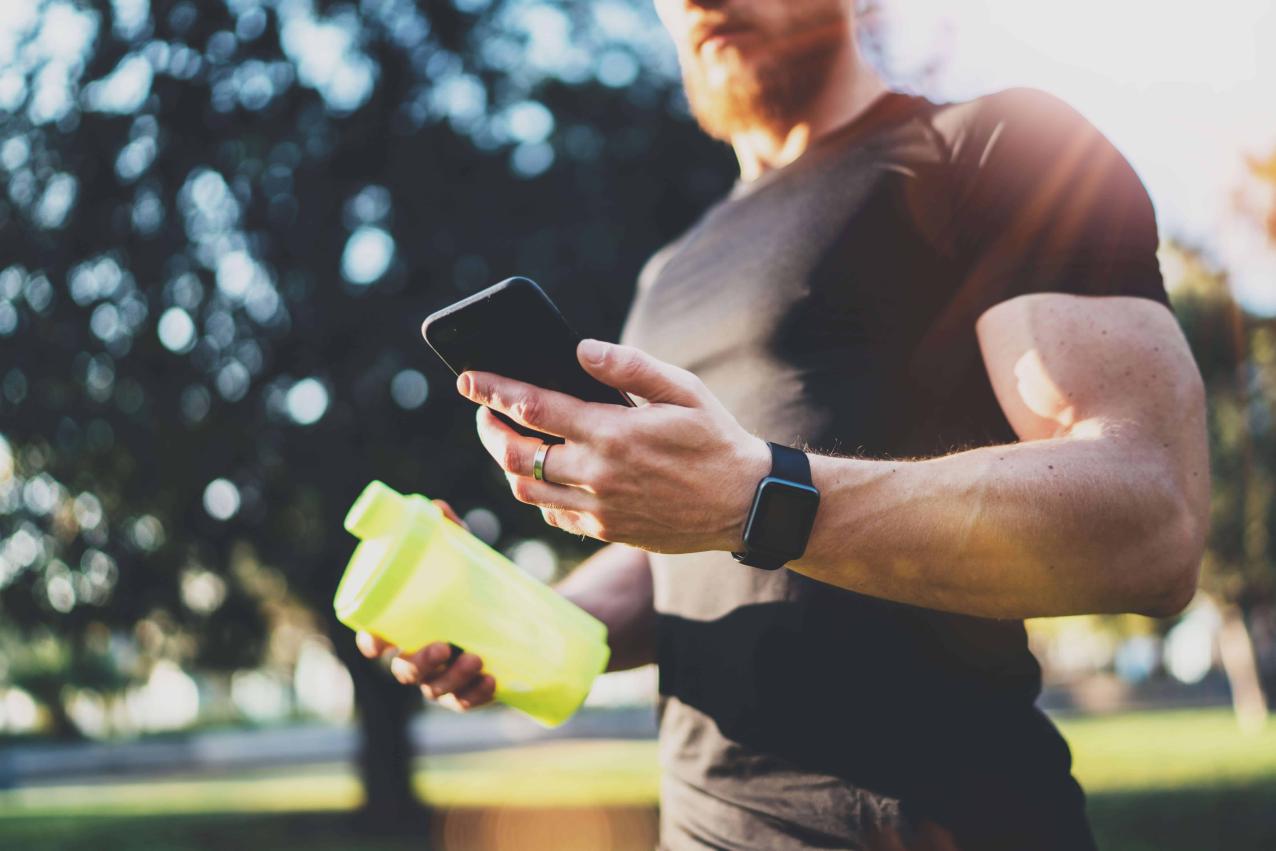How Can I Track My Progress Using a Fitness App?
Embarking on a fitness journey is a commendable step towards a healthier lifestyle. However, to ensure consistent progress and achieve your goals, it's essential to track your efforts and monitor your development. Fitness apps offer a convenient and effective way to do just that, providing a wealth of features and insights to help you stay on track and motivated.

Importance Of Tracking Progress In Fitness Journey
- Accountability: Logging your workouts and activities holds you accountable for your fitness commitments, making it less likely to skip workouts or slack off.
- Motivation: Seeing your progress visually represented can be a powerful motivator, boosting your enthusiasm and encouraging you to push further.
- Feedback: Tracking your progress allows you to assess what's working and what's not, enabling you to make informed adjustments to your fitness routine.
- Goal Setting: By monitoring your progress, you can set realistic and achievable goals, ensuring that you're continually challenging yourself and moving forward.
Fitness Apps As A Convenient And Effective Tool For Tracking Progress
Fitness apps have revolutionized the way people track their fitness progress. With a wide range of features and functionalities, these apps make it easier than ever to log workouts, monitor daily activity, track nutrition, and analyze your overall progress.
Whether you're a seasoned athlete or just starting out, there's a fitness app tailored to your specific needs and goals. These apps can be used on smartphones, tablets, and even smartwatches, providing seamless integration with your daily routine.
Overview Of The Article's Content
This comprehensive article delves into the world of fitness apps, providing valuable insights and practical tips to help you effectively track your progress and achieve your fitness goals. We'll cover the following key aspects:
- Choosing the Right Fitness App
- Setting Up Your Fitness App
- Tracking Your Fitness Activities
- Analyzing Your Progress
- Additional Tips for Effective Tracking
I. Choosing The Right Fitness App

Selecting the right fitness app is crucial to ensuring a seamless and enjoyable tracking experience. Consider the following factors when making your choice:
Factors To Consider When Selecting A Fitness App:
- Fitness Goals: Choose an app that aligns with your specific fitness goals, whether it's weight loss, muscle building, or improving endurance.
- Compatibility with Devices: Ensure that the app is compatible with your smartphone, tablet, or smartwatch to ensure seamless data syncing.
- Features and Functionality: Consider the features that are important to you, such as workout tracking, nutrition logging, sleep monitoring, and social integration.
- User Reviews and Ratings: Read user reviews and ratings to get an idea of the app's performance, reliability, and user-friendliness.
- Cost and Subscription Options: Some apps are free to use, while others offer premium features with a subscription. Choose an app that fits your budget and provides the value you're looking for.
Examples Of Popular Fitness Apps:
- Strava: Ideal for runners, cyclists, and swimmers, Strava tracks workouts, provides detailed insights, and offers social features.
- MyFitnessPal: A comprehensive app for tracking nutrition, calories, and macronutrients, MyFitnessPal also includes a vast food database and recipe integration.
- Fitbit: Known for its activity tracking, sleep monitoring, and heart rate monitoring, Fitbit offers a range of fitness trackers and a user-friendly app.
- Nike Run Club: Designed for runners, Nike Run Club provides guided runs, personalized coaching, and challenges to keep you motivated.
- Google Fit: A versatile app that tracks a wide range of activities, Google Fit integrates with other Google services and offers comprehensive health and fitness insights.
II. Setting Up Your Fitness App
Once you've chosen a fitness app, it's time to set it up and customize it to your preferences.
Creating An Account And Providing Personal Information:
- Create an account with the fitness app using your email address or social media profile.
- Provide personal information such as your name, age, gender, height, and weight to ensure accurate tracking.
Connecting The App To Compatible Devices (if Applicable):
- If you're using a fitness tracker or smartwatch, connect it to the app via Bluetooth or Wi-Fi.
- This will allow the app to automatically sync data from your device, such as steps taken, calories burned, and heart rate.
Setting Fitness Goals And Preferences:
- Set specific fitness goals, such as losing weight, building muscle, or improving endurance.
- Customize the app's interface and display to show the metrics and information that are most relevant to your goals.
III. Tracking Your Fitness Activities

Now that your fitness app is set up, it's time to start tracking your workouts and daily activity.
Logging Workouts And Exercises:
- Manually enter your workouts and exercises, or use the app's automatic tracking feature if available.
- Record the duration, intensity, and distance of your workouts for accurate calorie tracking.
- Add notes and comments to your workouts to keep track of your progress and any specific challenges or achievements.
Monitoring Daily Activity:
- Track your daily steps taken, calories burned, and active minutes to get a comprehensive view of your overall activity level.
- Set daily goals for these metrics to stay motivated and challenge yourself to move more.
Tracking Nutrition And Hydration:
- Log your meals and snacks in the app's food diary, including portion sizes and macronutrient information.
- Record your water intake to ensure you're staying hydrated throughout the day.
- Set daily goals for calorie intake and water consumption to support your fitness goals.
IV. Analyzing Your Progress
Regularly reviewing your fitness data can provide valuable insights into your progress and help you make informed adjustments to your routine.
Reviewing Historical Data And Trends:
- Use the app's historical data and trend graphs to track your progress over time.
- Identify patterns and trends in your workouts, nutrition, and overall activity levels.
Identifying Strengths And Weaknesses:
- Analyze your data to identify areas where you're excelling and areas where you need improvement.
- Use this information to adjust your fitness routine and focus on specific areas for development.
Adjusting Fitness Goals And Routines Accordingly:
- As you progress, adjust your fitness goals and routines based on your data and feedback.
- Set new challenges for yourself and continue to push your limits.
Celebrating Milestones And Achievements:
- Celebrate your milestones and achievements along the way to stay motivated and recognize your hard work.
- Share your progress with friends and family to build a support system and encourage each other.
V. Additional Tips For Effective Tracking
- Consistency: Use your fitness app consistently to ensure accurate and meaningful data.
- Realistic Goals: Set realistic and achievable goals to avoid discouragement and burnout.
- Social Features: Utilize the app's social features to connect with friends and family, share your progress, and motivate each other.
- Troubleshooting: If you encounter any issues or errors with the app, refer to the app's help section or contact customer support for assistance.
VI. Conclusion
Fitness apps offer a powerful tool for tracking your progress and staying motivated on your fitness journey. By choosing the right app, setting it up correctly, and consistently tracking your activities, nutrition, and overall health, you can gain valuable insights into your progress and make informed adjustments to your routine. Remember, self-monitoring is key to achieving your fitness goals and living a healthier, more active lifestyle.
YesNo

Leave a Reply